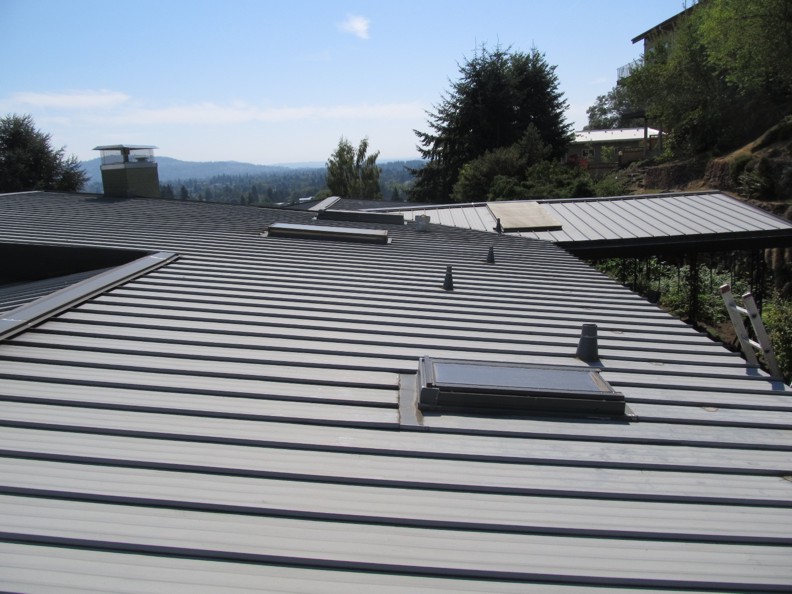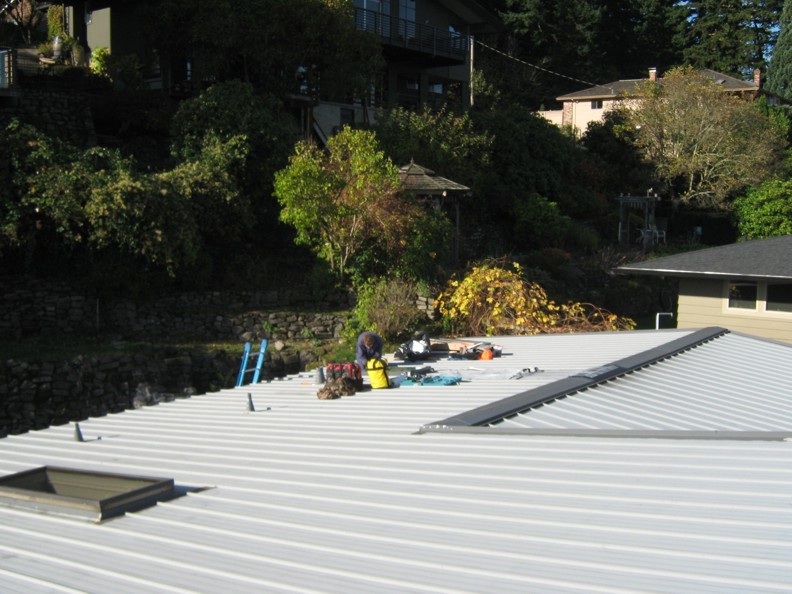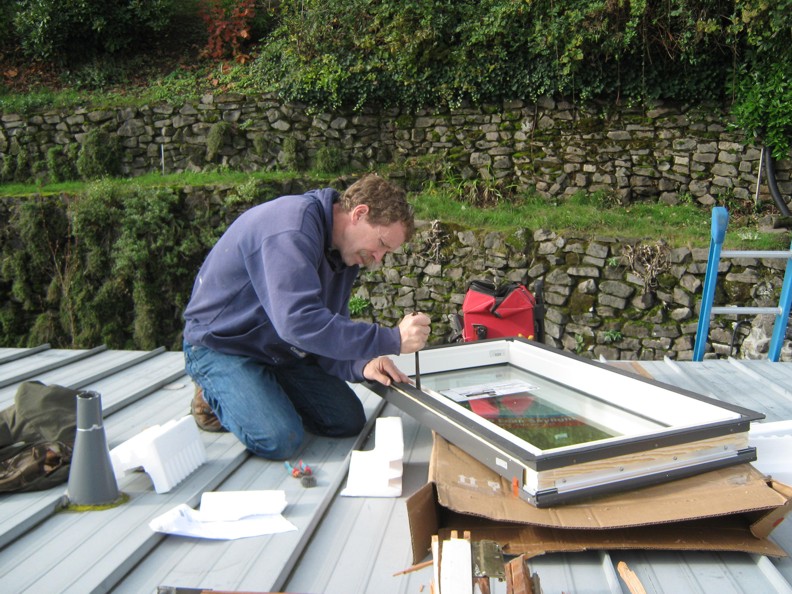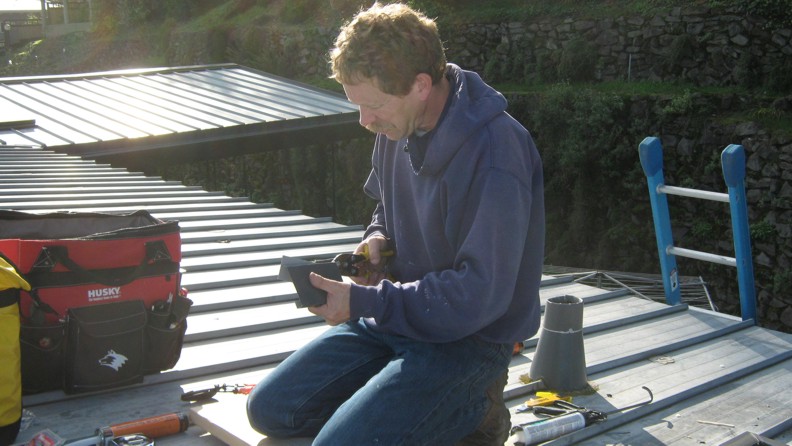|

A Mt. Tabor area neighborhood and a client for whom we have now done a number of projects.
|

Although we offered to repair his leaky skylight, he was convinced it needed replacement.
|

Fortunately, finding a replacement that would work with the original custom flashing that was made for use with the standing seam steel roofing did not prove to be difficult.
|

And that was because the original skylight was also a Velux brand skylight.
|

You might be amazed how many skylight, window and door companies seemingly do not want their names on their products.
|

What does that tell you? Velux is easily the best known residential brand of skylight, due in large part to their successful marketing and also their quality control department.
|

But there are many brands that you can run into when you repair skylights such as we do.
|

Supreme Skylights, Wasco Skylights, Solar Innovations, Sunptics, Domel Inc., Birdview Skylights, Artistic Skylight Domes Ltd., just to name a few.
|

We do lots of failed glass replacement on Skylights of just about every stripe. We have been known to track down and fix leaks, improperly applied flashing, failed glazing, rotten sash or jamb components, water damaged ceiling and/or structural truse components and drywall repair.
|

We were, for example, called upon to repair the drywall on this opening that was the result of a leak that was fixed when we replaced the skylight. By the way, replacement was the clients idea. We had suggested reglazing the glass, but the home owner didn’t want to mess with the original skylight.
|
|
|